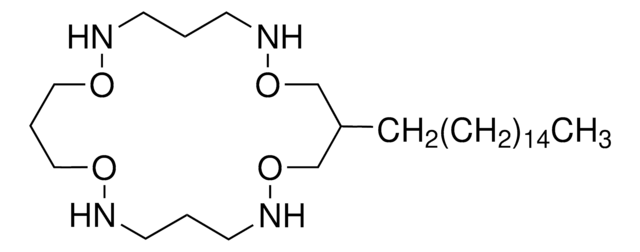80100
Dibutyl phthalate
Selectophore™
Synonym(s):
n-Butyl phthalate, DBP, Phthalic acid dibutyl ester
About This Item
Recommended Products
grade
for ion-selective electrodes
Quality Level
vapor density
9.6 (vs air)
vapor pressure
1 mmHg ( 147 °C)
product line
Selectophore™
assay
99.50%
form
liquid
autoignition temp.
756 °F
expl. lim.
0.47 %, 236 °F
color
clear
refractive index
n20/D 1.492 (lit.)
n20/D 1.493
bp
340 °C (lit.)
mp
−35 °C (lit.)
density
1.043 g/mL at 25 °C (lit.)
SMILES string
CCCCOC(=O)c1ccccc1C(=O)OCCCC
InChI
1S/C16H22O4/c1-3-5-11-19-15(17)13-9-7-8-10-14(13)16(18)20-12-6-4-2/h7-10H,3-6,11-12H2,1-2H3
InChI key
DOIRQSBPFJWKBE-UHFFFAOYSA-N
Looking for similar products? Visit Product Comparison Guide
General description
Application
Legal Information
signalword
Danger
hcodes
Hazard Classifications
Aquatic Acute 1 - Aquatic Chronic 2 - Repr. 1B
Storage Class
6.1C - Combustible acute toxic Cat.3 / toxic compounds or compounds which causing chronic effects
wgk_germany
WGK 3
flash_point_f
367.7 °F - open cup
flash_point_c
186.5 °C - open cup
ppe
Eyeshields, Gloves, type ABEK (EN14387) respirator filter
Choose from one of the most recent versions:
Already Own This Product?
Find documentation for the products that you have recently purchased in the Document Library.
Customers Also Viewed
Our team of scientists has experience in all areas of research including Life Science, Material Science, Chemical Synthesis, Chromatography, Analytical and many others.
Contact Technical Service















